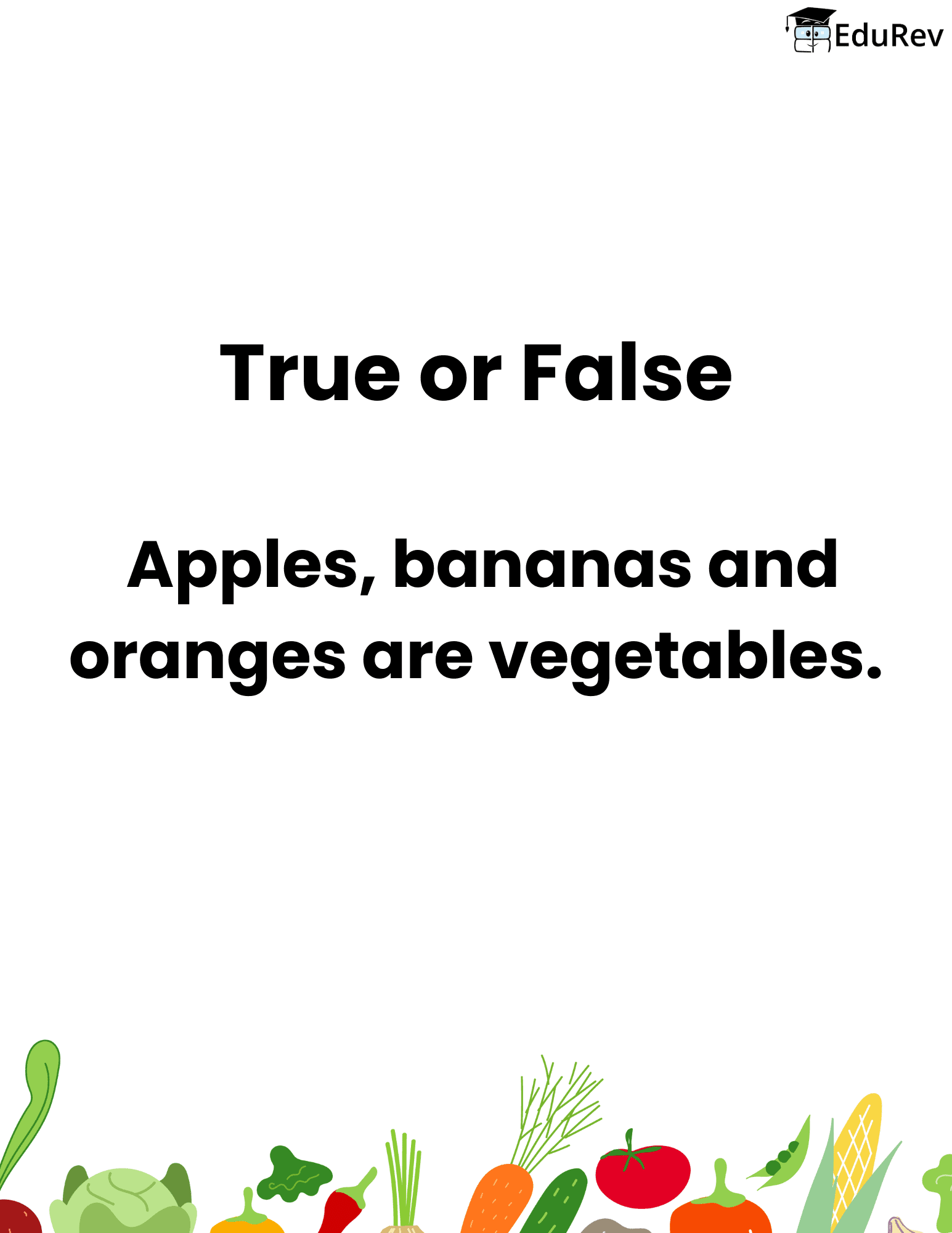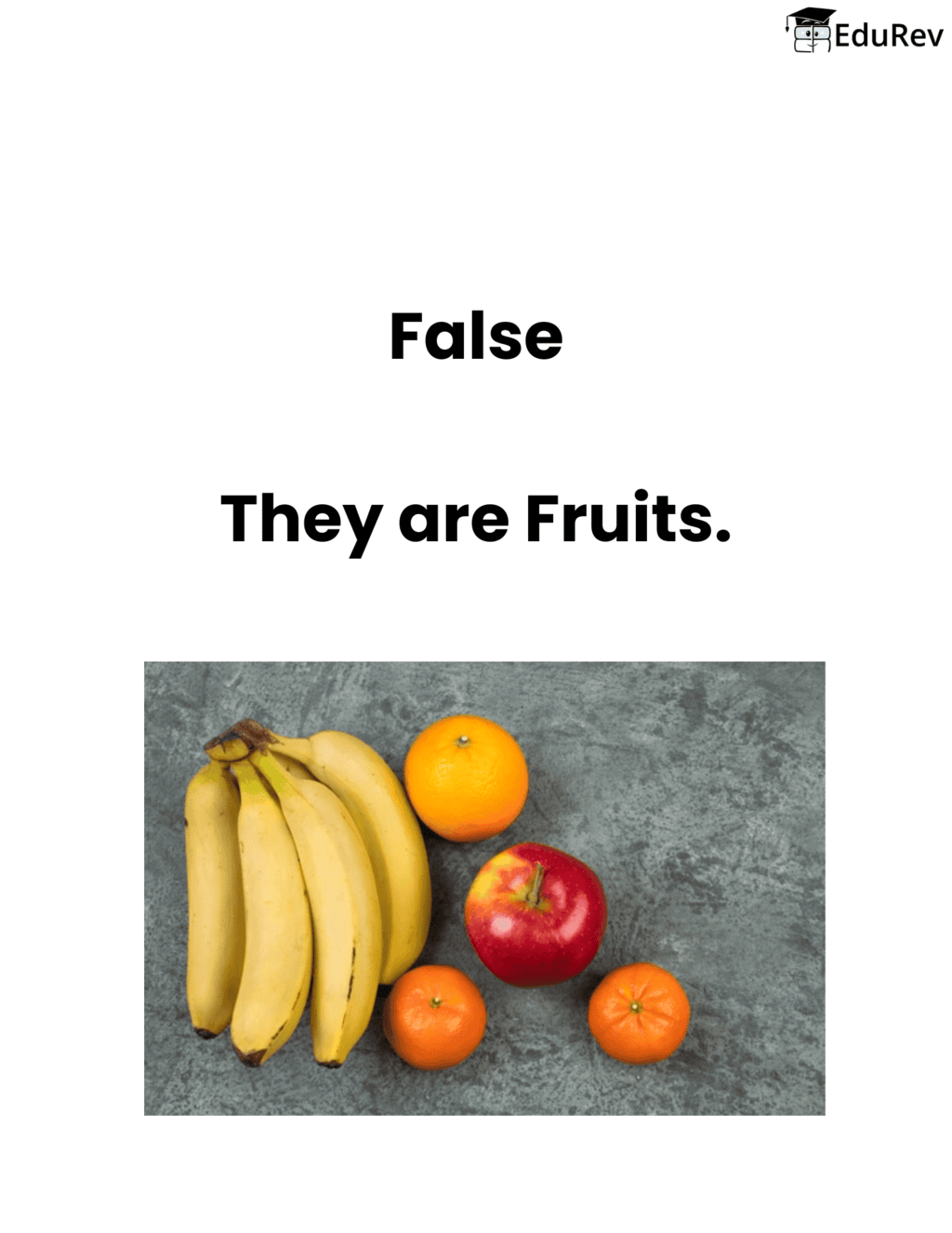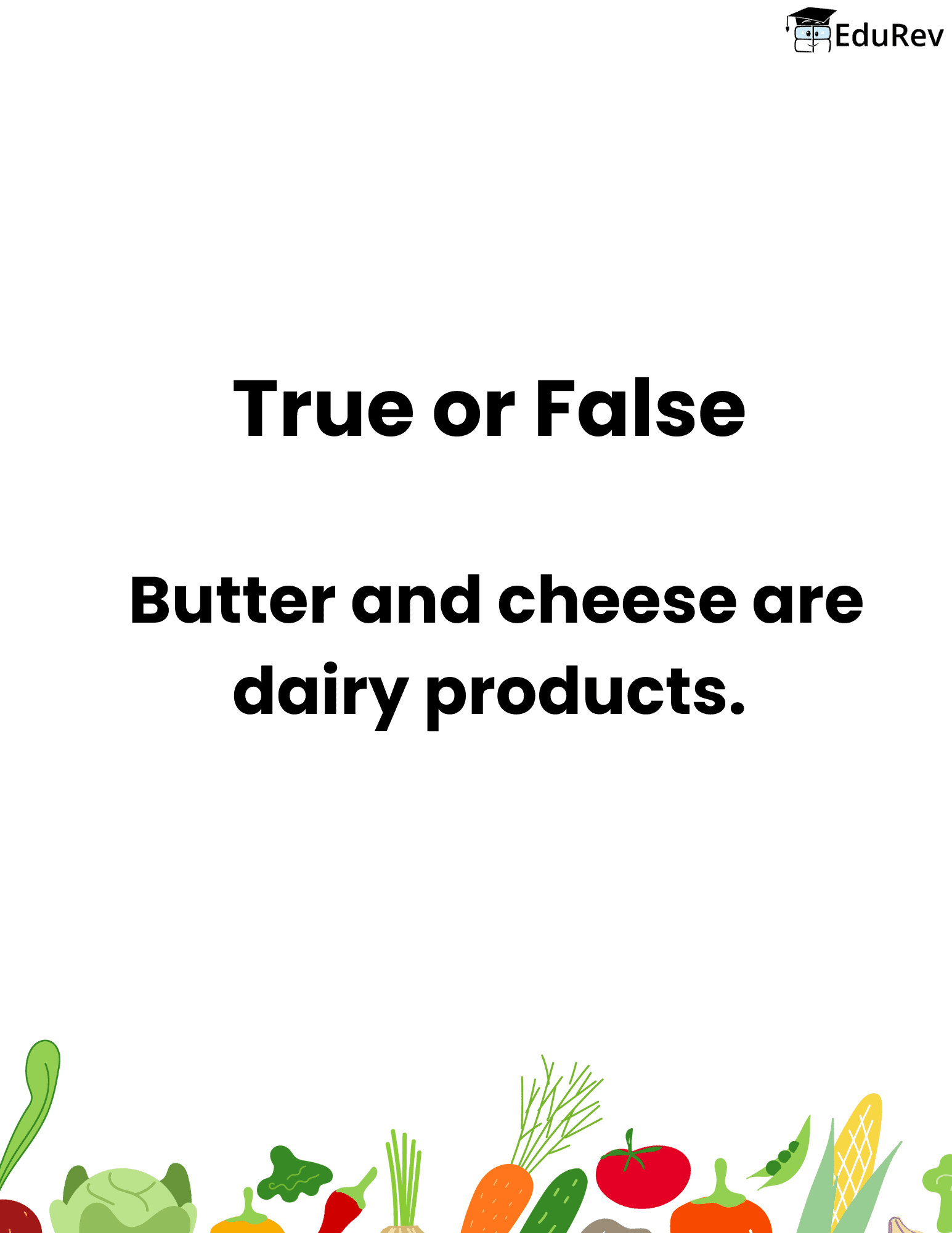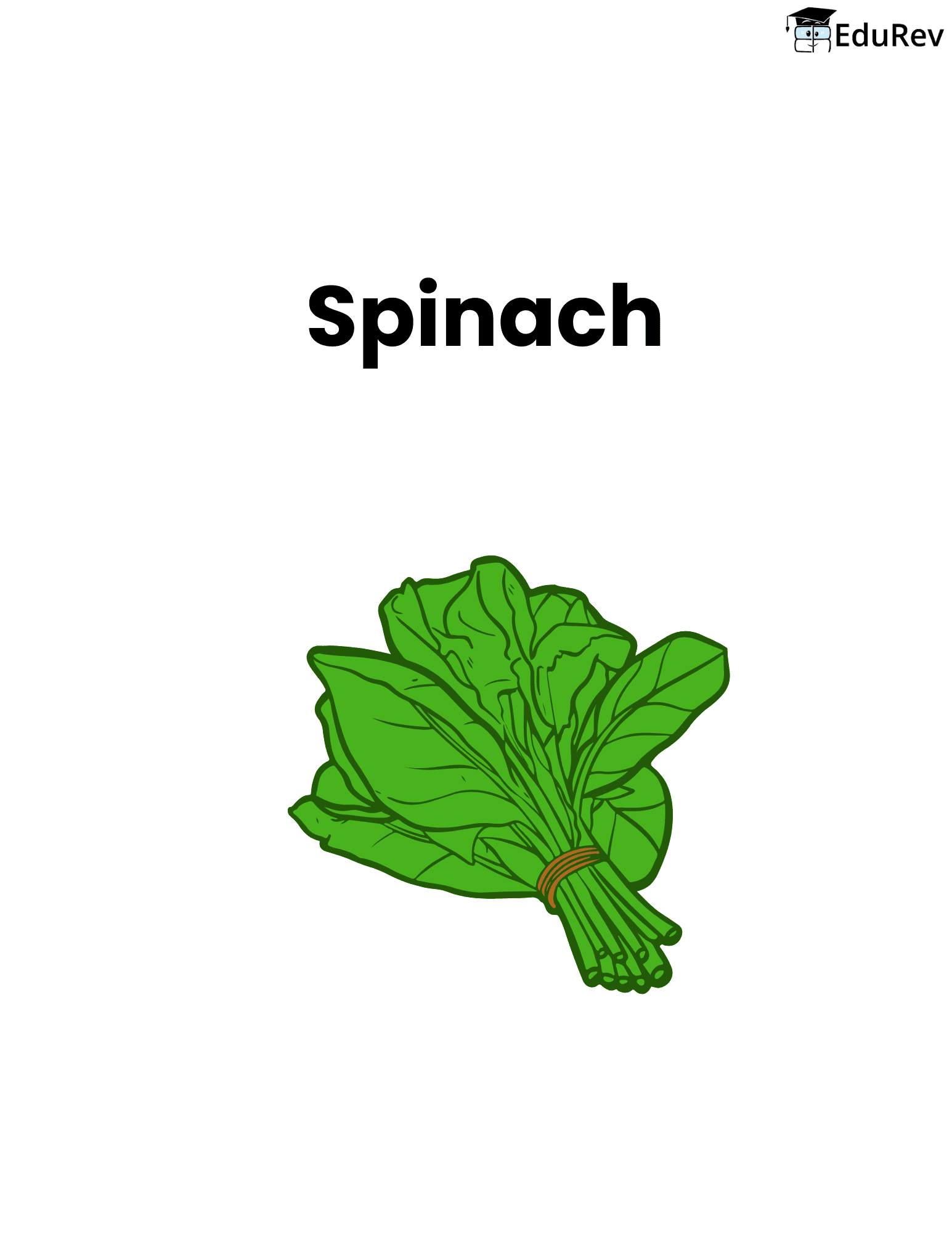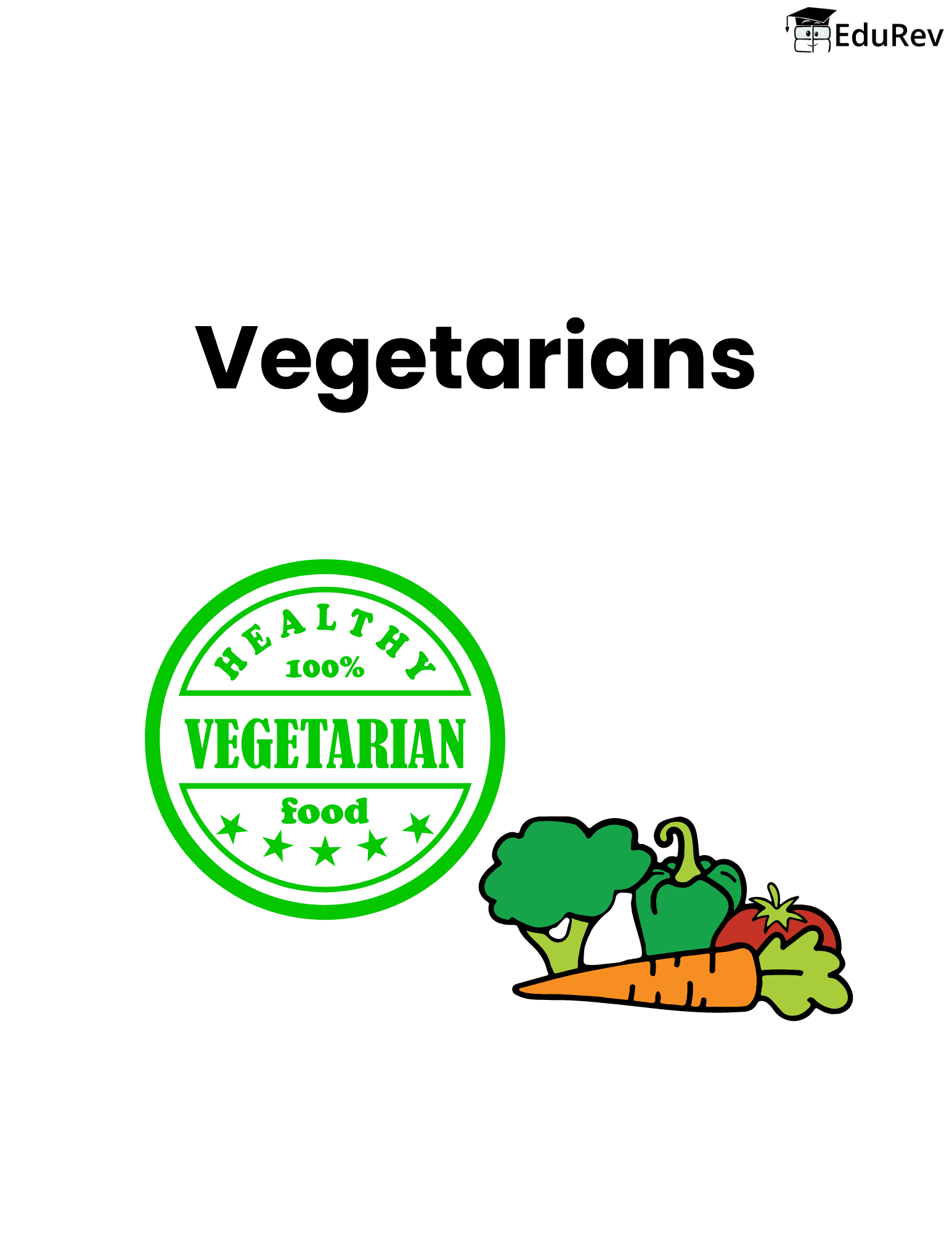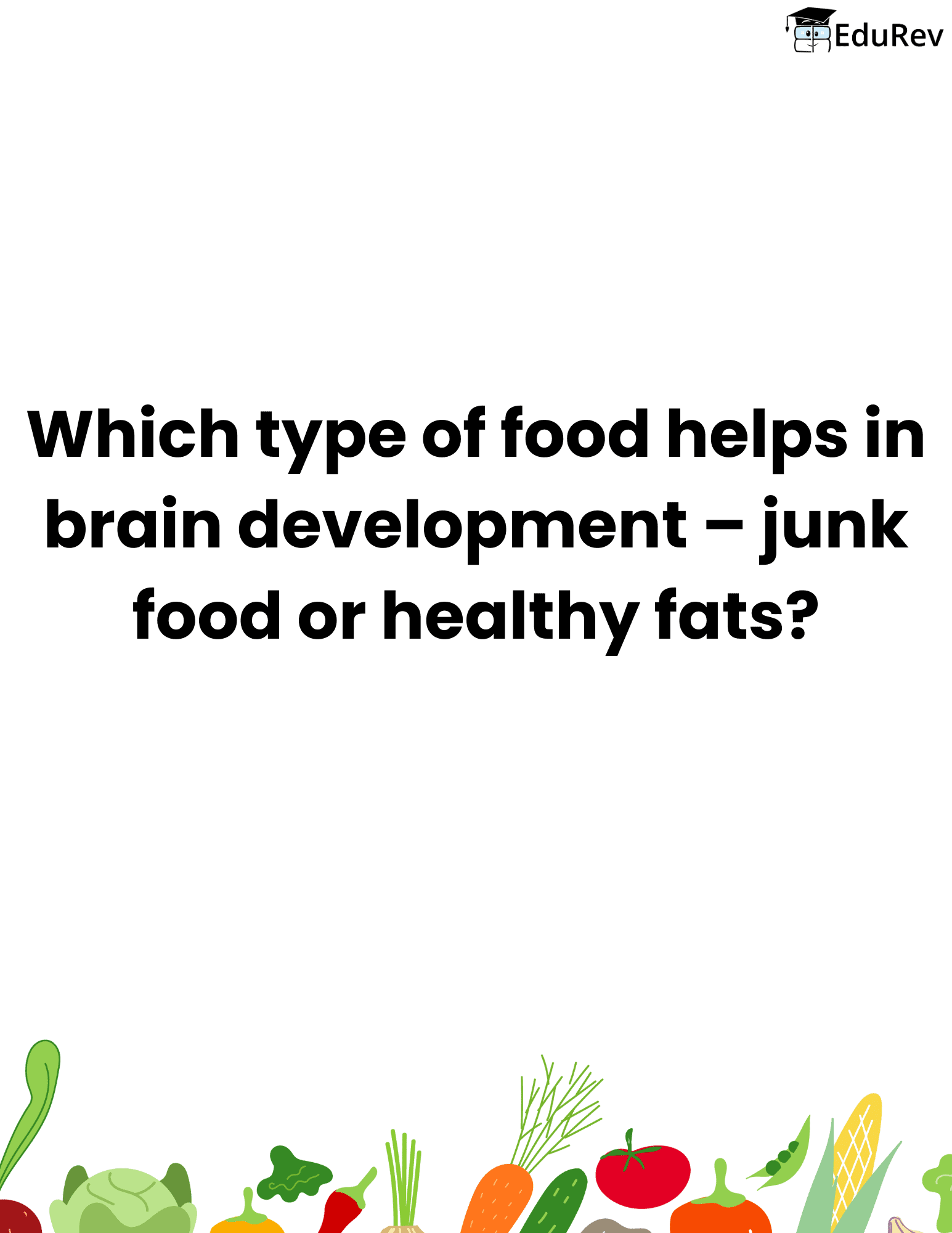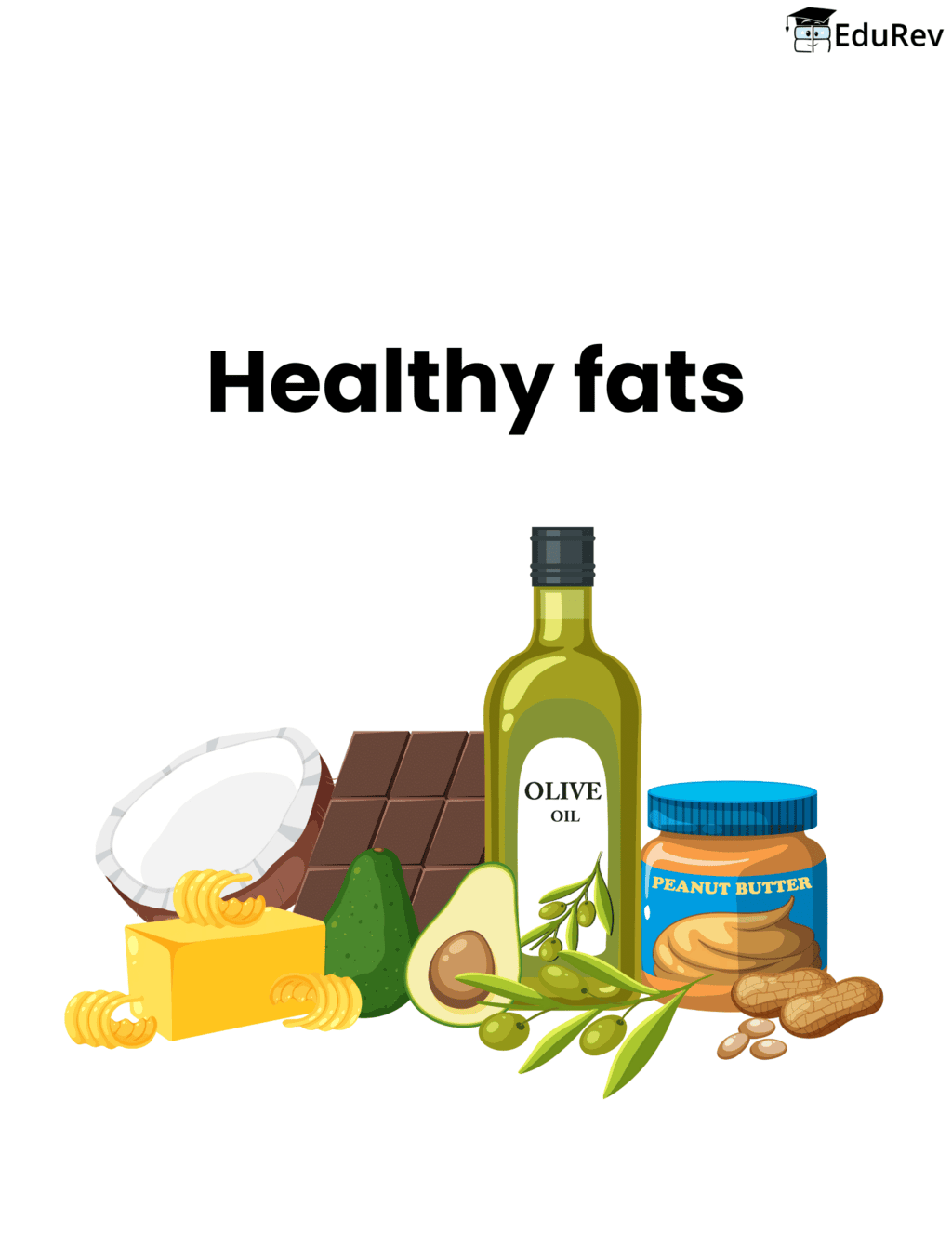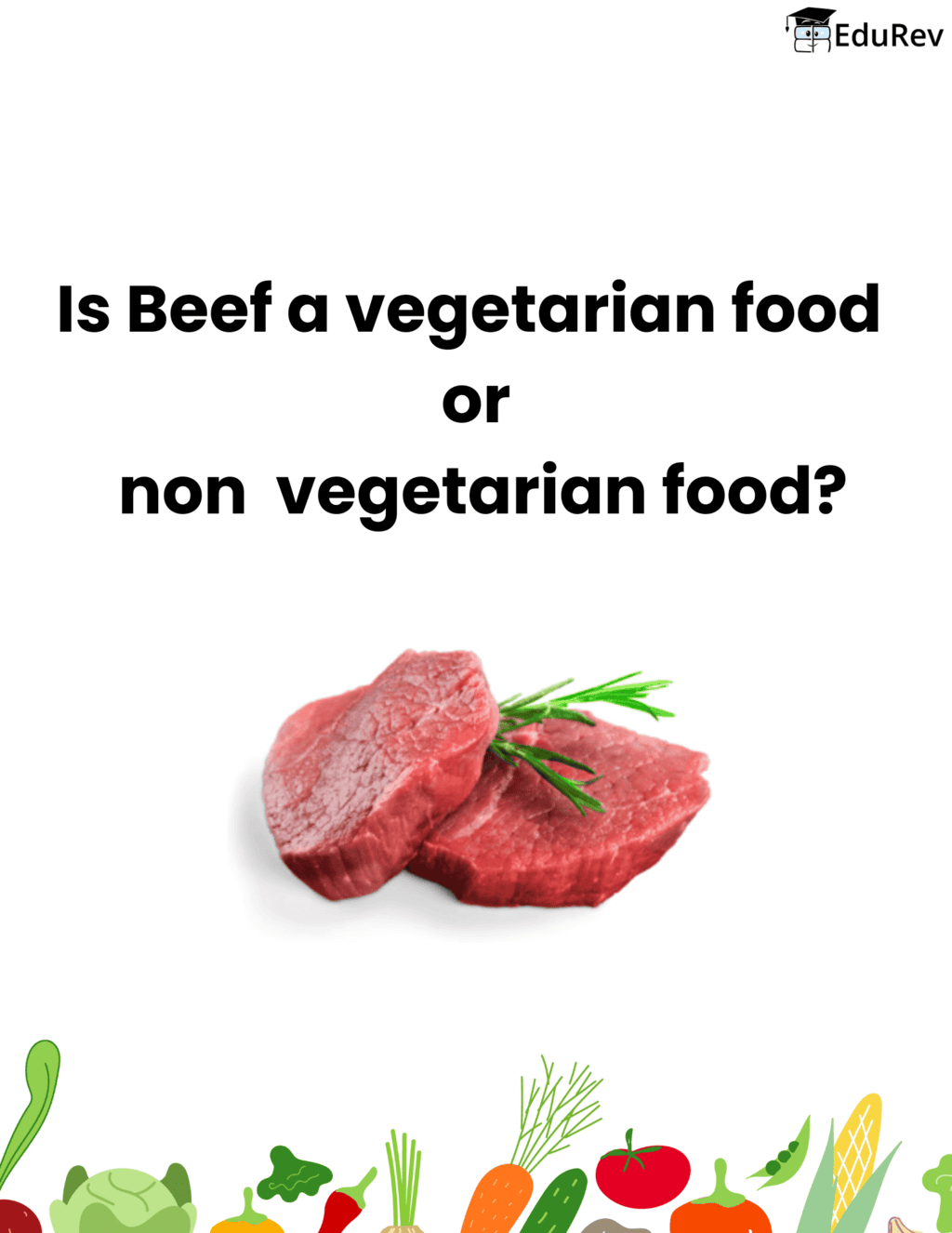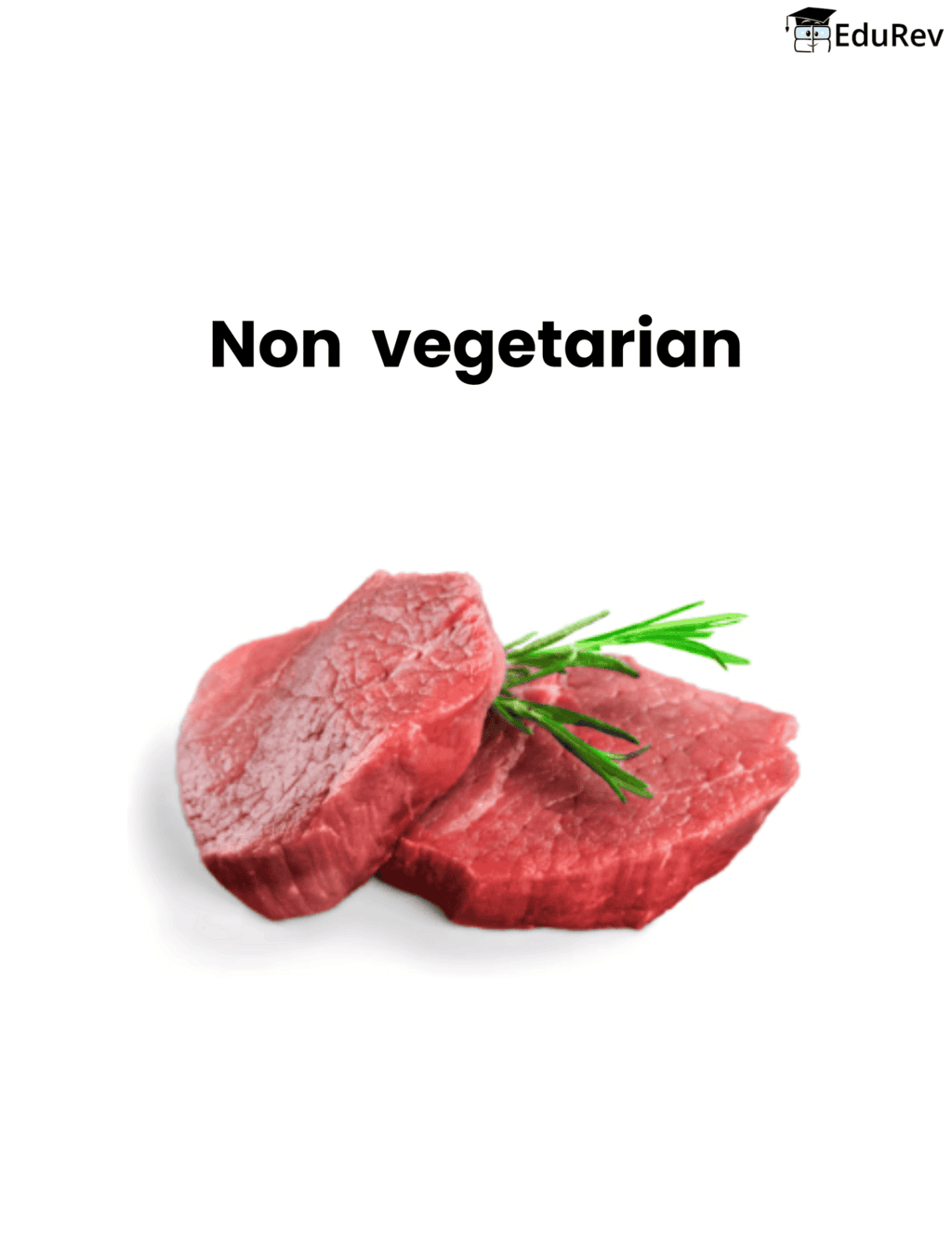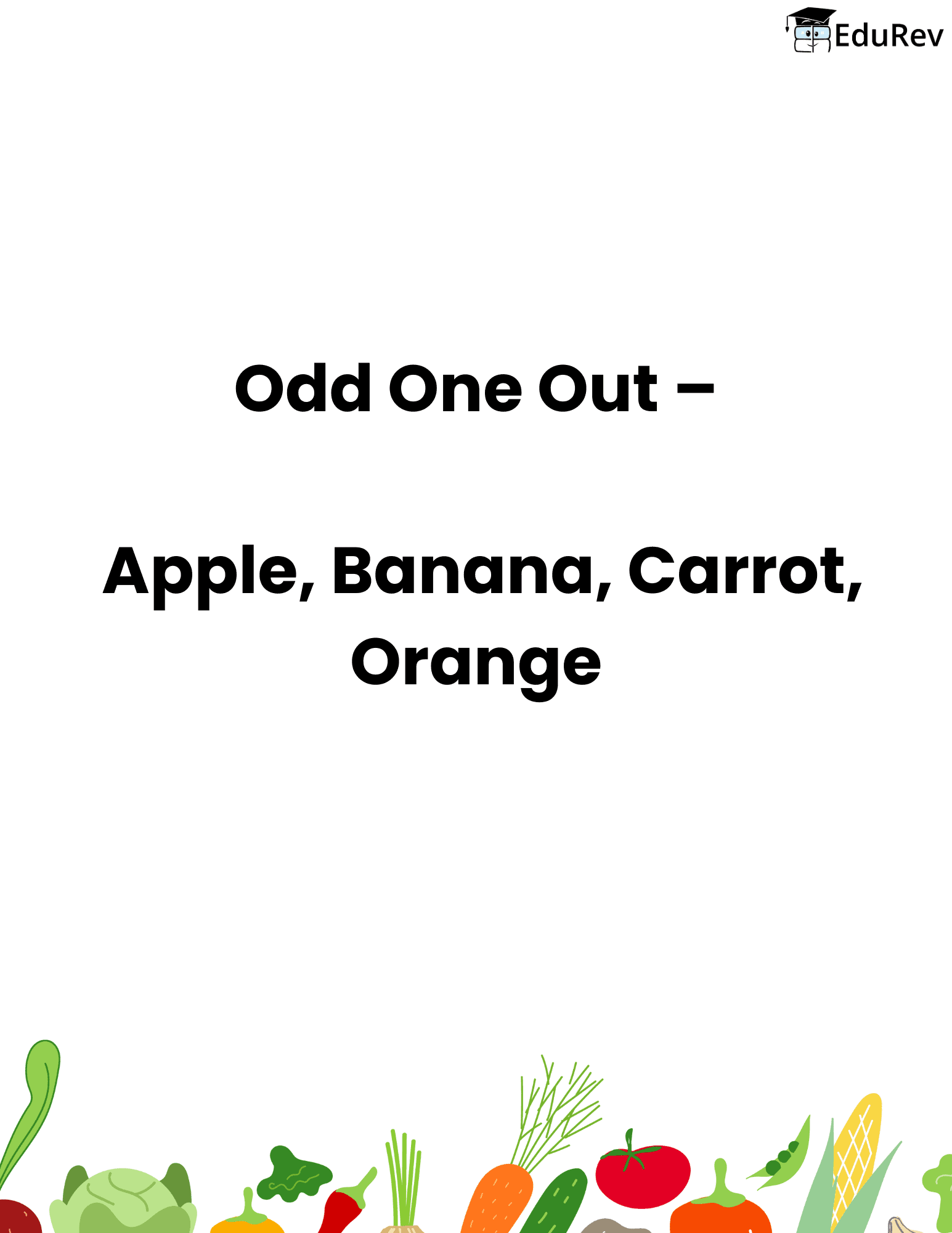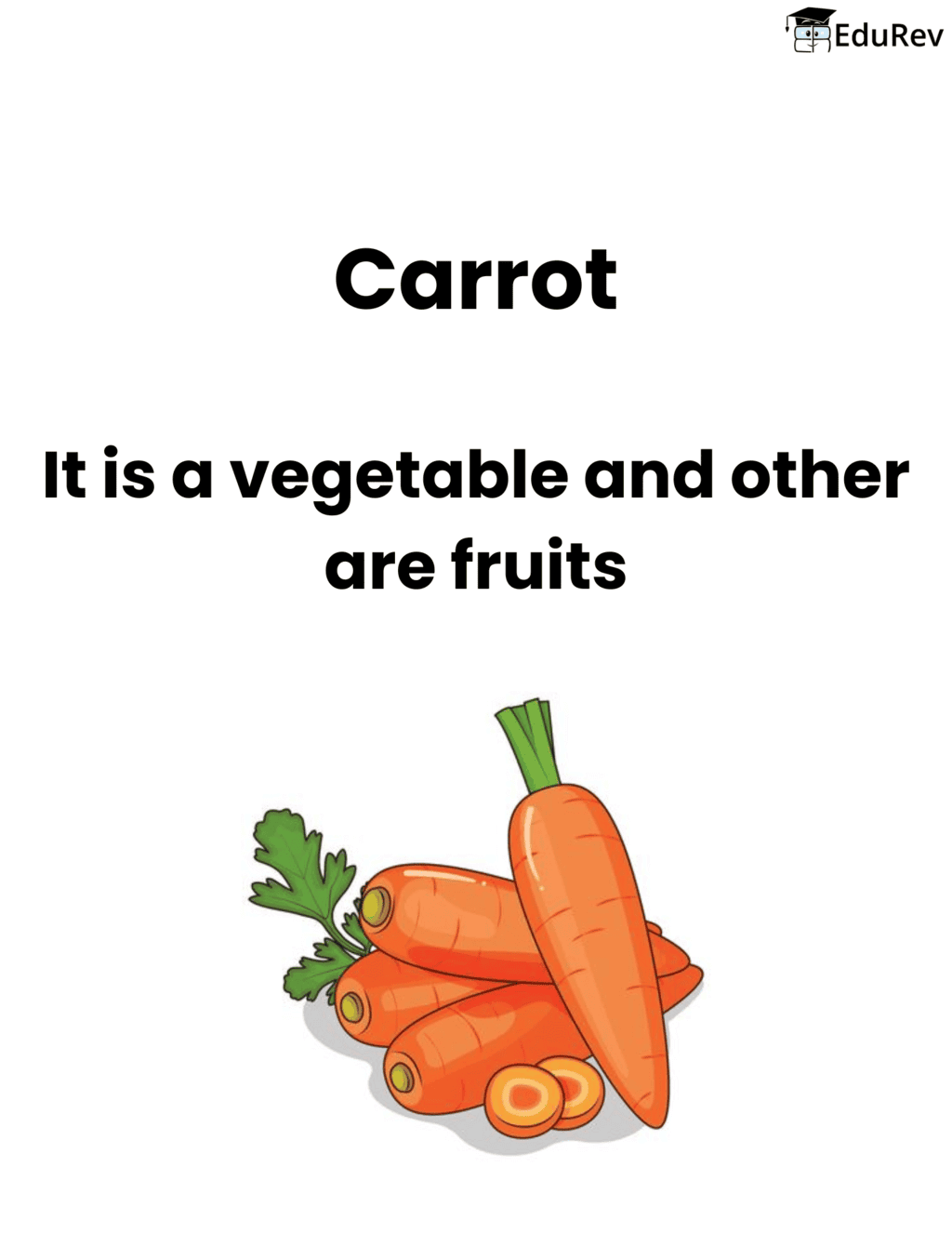 Unlock all Flashcards with EduRev Infinity Plan Starting from @ ₹99 only
|
Class 1 Exam > EVS for Class 1 > Flashcards: Vegetarian or Non-vegetarian
|
33 videos|215 docs|44 tests
|
FAQs on Flashcards: Vegetarian or Non-vegetarian Flashcard - EVS for Class 1
| 1. What are the main differences between vegetarian and non-vegetarian diets? |  |
Ans. The primary difference between vegetarian and non-vegetarian diets lies in the consumption of animal products. Vegetarians do not eat meat, poultry, or fish, and their diet mainly consists of fruits, vegetables, grains, nuts, and dairy products. In contrast, non-vegetarians include meat, poultry, and fish in their diet, which can provide high levels of protein and certain nutrients that may be less abundant in a vegetarian diet. Additionally, vegetarians often focus on plant-based sources of nutrients, while non-vegetarians may have a more varied diet that includes both animal and plant-based foods.
| 2. What are some health benefits of following a vegetarian diet? |  |
Ans. A vegetarian diet is associated with various health benefits, including lower risks of heart disease, hypertension, type 2 diabetes, and certain cancers. This diet tends to be lower in saturated fats and cholesterol while being higher in dietary fiber, vitamins, and antioxidants. Moreover, individuals following a vegetarian diet may have better weight management due to a higher intake of fruits and vegetables, which are lower in calories. It can also promote better digestion and overall gut health due to the high fiber content.
| 3. Can a vegetarian diet provide all the necessary nutrients? |  |
Ans. Yes, a well-planned vegetarian diet can provide all the essential nutrients needed for health. Key nutrients to pay attention to include protein, iron, calcium, vitamin B₁₂, and omega-3 fatty acids. Vegetarians can obtain protein from legumes, nuts, seeds, and dairy products. Iron can be sourced from leafy greens, fortified cereals, and legumes, while calcium can be found in dairy products and fortified plant milks. Vitamin B₁₂ is primarily found in animal products, but vegetarians can take supplements or consume fortified foods. Omega-3 fatty acids can be obtained from flaxseeds, chia seeds, and walnuts.
| 4. How can one transition from a non-vegetarian to a vegetarian diet? |  |
Ans. Transitioning from a non-vegetarian to a vegetarian diet can be done gradually. Start by reducing meat consumption, perhaps by implementing meatless days each week. Gradually replace meat with plant-based proteins, like beans, lentils, and tofu. Experiment with new vegetarian recipes and ensure to include a variety of fruits, vegetables, whole grains, and dairy or dairy alternatives. It's also helpful to educate yourself on nutrition to ensure that you meet your dietary needs. Consulting with a healthcare provider or a nutritionist can provide additional guidance during the transition.
| 5. What are some common misconceptions about vegetarian diets? |  |
Ans. Common misconceptions about vegetarian diets include the belief that they lack sufficient protein or that they are inherently unhealthy. However, many plant-based foods are rich in protein, such as beans, lentils, tofu, and quinoa. Another misconception is that vegetarians do not get enough iron; while plant-based iron is less easily absorbed than iron from meat, vegetarians can enhance absorption by combining iron-rich foods with vitamin C sources. Additionally, a vegetarian diet can be very healthy when it includes a variety of foods and is well-balanced, contrary to the notion that it is limited or deficient.
Related Searches







